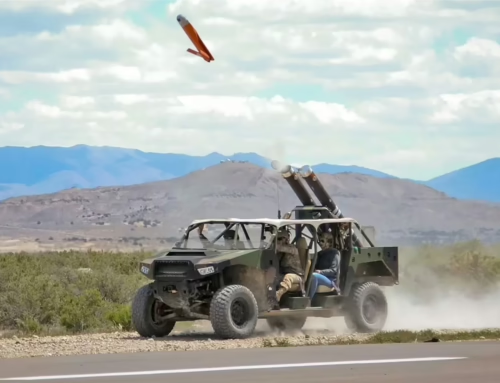In the rapidly advancing world of defence technology, artificial intelligence (AI) is becoming increasingly prolific, revolutionising the way armed forces worldwide conduct operations. This week, several notable advancements have emerged that underscore the innovative integration of AI in military applications. These developments span from predictive technologies in equipment maintenance and enemy movement anticipation to creating AI-powered munitions. These strides mark significant technological progress and provide insight into the future direction of military operations enhanced by AI.
One of the most striking developments comes from the US Army, which is at the forefront of employing AI to predict enemy movements on the battlefield. The initiative involves the creation of the Persistent Surveillance and Dissemination Node (PSDN), which leverages machine learning algorithms to sift through vast amounts of data collected from a variety of sources, including drones, satellites, and ground sensors. The PSDN’s primary objective is not just to analyse this data, but to use it to enhance operational readiness. By forecasting where enemy forces are likely to move next, the PSDN offers commanders a strategic edge, enabling them to pre-empt enemy actions and optimally position their troops. This approach of harnessing AI for predictive analytics embodies a significant leap towards achieving superior situational awareness and operational readiness.
Across the Atlantic, the Royal Navy is implementing AI to bolster the reliability of its fleet through the Equipment Health Management (EHM) system. Utilising machine learning to scrutinise data gathered from sensors on critical equipment such as engines, generators, and pumps, the EHM can detect patterns and anomalies indicative of potential failures. By predicting equipment malfunctions before they occur, the system facilitates timely maintenance interventions, thereby enhancing the fleet’s operational availability and reducing downtime. This not only improves operational efficiency but also yields considerable cost savings, as it prevents costly equipment failures and reduces the need for emergency repairs. This application of AI in predictive maintenance exemplifies the pursuit of optimal asset management and resource efficiency within the military sector.
In another noteworthy development, Israel’s Rafael Advanced Defense Systems has unveiled the Firefly, an AI-powered loitering munition designed for reconnaissance and precision-strike missions. This compact, autonomous drone can execute extended flights, performing area scouting and transmitting real-time video feedback to a command centre. AI algorithms allow the Firefly to navigate autonomously, circumvent obstacles, and accurately identify targets. Upon confirming a target, the Firefly can execute a precision dive and detonate, thereby neutralising the threat. The unveiling of such munitions illustrates the transformative impact of AI on enhancing mission capabilities through increased autonomy and precision.
These developments spotlight the pivotal role of AI in modernising military operations. From enhancing situational awareness and operational efficiency to enabling precise target engagement, AI-driven technologies are set to redefine the dynamics of warfare. Moreover, these advancements align with our services at Agincourt.io, committed to leveraging AI and other cutting-edge technologies to support defence and security missions. Our products and services are designed to integrate seamlessly with such innovative technologies, offering scalable solutions for contemporary defence challenges. Through constant innovation and collaboration, we aim to contribute to advancing defence capabilities globally, ensuring that our clients are equipped with the tools needed to operate effectively in the modern battlespace.





